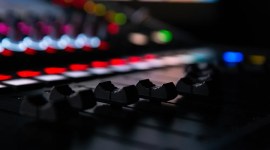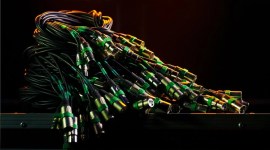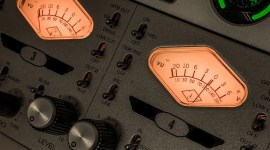
Best Headphones For Mixing And Monitoring
Headphones come in many shapes, sizes, and functions. These are the tools we need to listen to music, a podcast, or the sound world of a film. When editing sound for a project, choosing headphones can be overwhelming. Here we have narrowed down some of the market’s best mixing and monitoring headphones.
There are so many headphones on the market, and it’s easy to get overwhelmed. Sometimes being spoilt for choice is a burden! If you are someone who works in audio editing, the types of headphones that you need a mixing and mastering headphones.
Headphone Basics
What is mixing and mastering?
Mixing and mastering are the crucial stages of audio editing before it’s released to public audiences. These are moments of critical listening. This includes ensuring the sounds sit well in the mix and sound good across all devices; not just any old pair of headphones provide the quality of sound needed to mix.
Also known as studio headphones, these allow you to hear the sound as close to the original recording as possible. They allow for an excellent analysis of the musical and technical aspects of the sounds. Their value comes from the close accuracy of the reproduction of the original sound. Picking up an extensive range of frequencies and distinguishing each instrument or dialogue are needed to make the appropriate adjustments.
So what features do you need to look out for when choosing a good pair of studio headphones? Here are some of the key elements of these headphones and why they need to be considered.
Flat Frequency Response
When in moments of critical listening, it’s important to note that no frequencies are boosted or minimized. A flat frequency response means that all sounds from varying frequencies are heard evenly. This is a great advantage when mixing audio, as nothing is omitted or boosted.
You will find that certain frequencies are boosted for some of the most popular headphones on the market. Beats by Dr. Dre, for example, specifically emphasizes the bass for a more enjoyable listening experience. These aren’t suitable for mixing or monitoring scenarios as you won’t get an accurate representation of the original recording.
Wide Frequency Range
A wide frequency range can help hugely in the editing process. On average, the human ear can detect between 20 Hz and 20,000 Hz (or 20 kHz). Studio headphones can closely reproduce all of the frequencies. This allows for much better accuracy exposing great detail in the recording. This also contributes to the soundstage, which determines the space and environment of the reproduced sound.
Comfort and Durability
Most studio headphones are made to last but are also very comfortable. The ear cups tend to be softer and bulkier. It’s a plus for any sound engineer that comfort is considered.
Closed and Open Back
Studio headphones usually fall into two categories: closed-back and open-back. Closed-back is when the ear cups are completely sealed around your ear, which is great for blocking outside noise with better isolation. The drivers of the headphones (the device that turns electrical signals into sound) are closed off. Open back is when the drivers sit outside, allowing air exposure. These usually have the advantage of making the sound more natural, but only really work in quiet environments, like your studio space.
Audio Technica ATH-M50 x
Kickstarting our list is the Audio Technica ATH M50 x.

These headphones are a trendy choice amongst sound engineers. These closed-back headphones are fabulous for casual use in the studio and are comfortable. The frequency range is 15Hz to 28kHz, and they are relatively light. The ear cups swivel as well as having a detachable cable. It does come with three different cables, including two straight cables, a coiled cable, and a 6.35mm adapter.
The price is $169, which is an excellent deal for their performance. They live up to their value, with a comfortable design for long monitoring or recording sessions. The downside is there is a slight leak when audio volumes are high. This may not be the best option for noise-sensitive sessions. As they are closed back, the soundstage is limited. However, the sound quality is balanced across the frequencies. A perfect pair of headphones for any aspiring audio engineer!
Quick specs
- For Pro-Level Tracking/Mixing and DJing
- 45mm Neodymium Dynamic Drivers
- 15 Hz to 28 kHz Frequency Response
- Tuned for Clarity & Deep, Accurate Bass
- Over-Ear, Sound-Isolating Design
- 90° Swivel Earcups, Foldable Design
- Three Detachable Single-Sided Cables
- Pro-Grade Build Boosts Comfort/Strength
- 3.5mm TRS Plug and 1/4″ Screw-On Adapter
Beyerdynamic DT 770 Pro
These headphones are also another popular choice. Its main features include a wide frequency range of 5Hz to 40kHz, extremely comfortable, and closed back, providing good isolation. These are on the higher end of the market at $279. However, the sound reproduction you get from these certainly makes it worth the price.

The main attraction of these is the comfort aspect. They are perfect for long mixing sessions from the thick and soft layer of padding. The closed-back design also contributes to shutting out any noise. This is passive noise cancellation, so the headphones have no active noise cancellation technology. The drivers inside are the STELLAR.45 transducers which perform brilliantly across all devices. The lightweight coil inside, along with the great response of the transducers, provides a reliable sound, free of distortion, and balanced across the entire frequency range.
The only downside with these headphones is the portability. Unlike the ATH-M50 x, the ear cups don’t swivel, can’t be folded, and are rather bulky. It makes it awkward to carry around for anyone constantly on the move. These may be better for those who work primarily in studio settings.
Quick Specs
- 32Ω Drivers
- Limited Edition “88” Label on Side Cups
- All Black Design
- Innovative Bass-Reflex System
- “Softskin” Head Band and Earpads
- Closed, Diffuse-Field Studio Design
- Replaceable Parts for Easy Servicing
- Handmade in Germany
Sony MDR-7506
Another household name, the Sony MDR-7506 headphones, are a classic in the mixing and mastering world. These have been around for nearly 30 years and are still highly regarded as staple studio headphones.
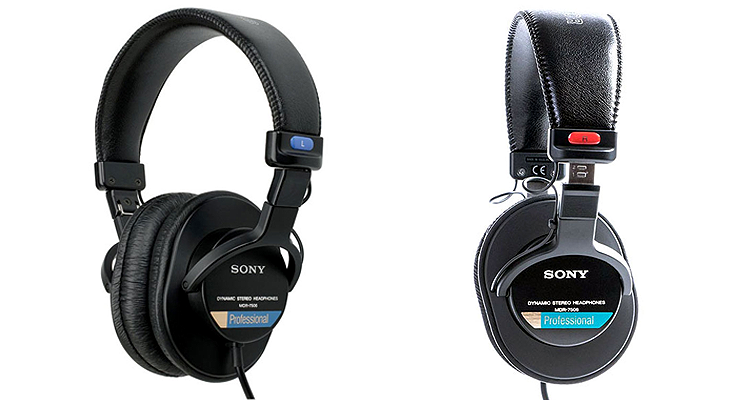
The MDR-7506 has a neutral sound quality meaning high and low frequencies aren’t unduly boosted. It has a good amount of bass and sharp high frequencies, perfect for sound accuracy. The headphones come with a coiled cable that’s well-built, as well as the ear cups are replaceable. They are comfortable, light, and good for long recording/mixing sessions. These are also a pretty good price at $79, another decent entry-level pair of headphones.
The cons that have been encountered is that the lightness of the headphone does feel like it has a poor build quality. While they are light, the coiled cable can feel rather heavy. But if you are looking for a pair of headphones that reproduce good quality sound at a lower price, these are a great choice.
Quick Specs
- 40mm Neodymium Drivers
- Closed Design
- Swiveling Earcups
- Single-Sided Cable
- Coiled Cable
- Soft Case
Sennheiser HD 560S
The Sennheiser HD 560S headphones are the first pair of open-backs to make this list. The open back allows a much more spacious sound experience while distinguishing good separation of sound sources in the mix. With a highly refined sound and a comfortable ear cup design, it ticks many boxes for the price it is currently at.
Knowing that there will be long recording sessions, the more prominent ear cups with a soft velour make for little discomfort, if any at all. It also has a thick headband for a more secure fit. Furthermore, they are lightweight headphones at a reasonable price of $199.95!

The sound reproduction of the HD 560S is pretty flat, with a frequency response of 6Hz to 38kHz. They reproduce a good bass range for an open-back design, but very dense bass notes do tend to lose clarity because of the open-back. Mid-range lacks any coloration, but this is good for studio usage. High frequencies are well-controlled and extended. Not too harsh sounding, which is another plus.
Being open-back does come with poorer isolation than closed-back headphones. Sound leakage is prone with these types of headphones. Open backs tend to be used when you’re alone, and these are indeed designed for that purpose. These are designed specifically for analytical listeners, so if you are one of those, these are the pair for you.
Quick Specs
- Open, Dynamic, Circumaural Design
- Audiophile Sound Reproduction
- 6 Hz to 38 kHz Frequency Response
- Angled Drivers Emulate Speaker Positions
- 120-Ohm Polymer Blend Transducers
- Comfortable Fit with Velour Earcups
- 1/4″ and 3.5mm Connections
- Detachable 9.8′ Cable
- Works with Portable Audio Devices
Beyerdynamic DT 1990 Pro
For those looking for a pair more up-market, the Beyerdynamic DT1990 Pro are a pair of stunners. These well-built headphones are known for their resolution of sound, providing an impressive listening experience. As they are open back, they are designed for critical listening in the studio.
It also comes with two sets of ear pads: one with a neutral frequency response for analytical listening and the other with a subtle bass boost.
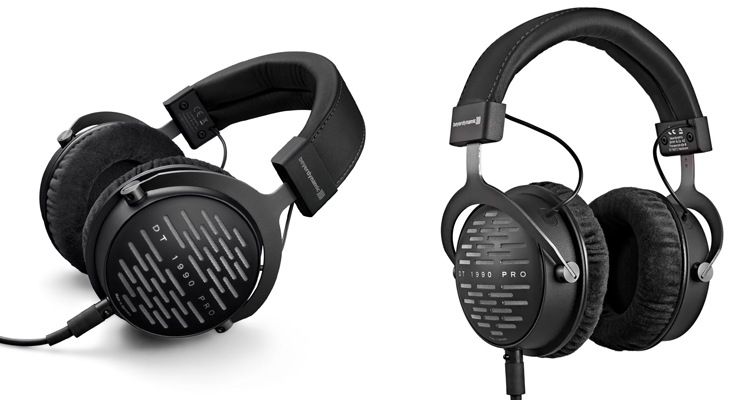
Comfort levels are second to none with these headphones, with the ear cups made of memory foam. It comes with two cables: a 3-meter cable and a 5 meter coiled cable, and caters to both a 3.5mm jack and a 6.35mm adapter.
The neutral ear cups have a clearcut sound, with lots of resolution on the high frequencies and great balance across the other frequencies. The frequency response stands at 5Hz to 40 kHz and has a great soundstage providing great sound imaging.
The downside is that as they are open back, they aren’t so suitable for casual listening outside the studio space. The mid-range frequencies do tend to get overshadowed but not to the extreme. However, this can disadvantage those who may want something genuinely neutral. The most obvious is the price. It’s very high at $529, but the build, sound quality, and listening experience you gain from these match the value.
Quick Specs
- 32Ω Drivers
- Limited Edition “88” Label on Side Cups
- All Black Design
- Innovative Bass-Reflex System
- “Softskin” Head Band and Earpads
- Closed, Diffuse-Field Studio Design
- Replaceable Parts for Easy Servicing
- Handmade in Germany
Focal Listen Professional Studio Headphones
A brand that isn’t as well known as Beyerdynamic or Sennheiser, however, these headphones are an ideal all-rounder. The frequency response lies at 5Hz to 22kHz. Characteristics of frequencies include an extended and excitable bass, clear mids, and shimmering high frequencies. The design is a snug fit, sturdy, and has a stand-out look with the red on the underlayer of the headband and ear cups. Furthermore, they are also foldable and come with a carry case, and two cables (5 meters and 1.2 meters with a 6.35mm adapter).

The closed-back design limits the soundstage however it does still provide a pleasing listening experience. While it has a wide frequency response, there is a slight emphasis in the mid-range which can be a disadvantage to some audio engineers that strive for analytical accuracy. The extra comfort of these headphones and versatility these headphones stand at $299 which is on the higher end, but with their brilliant performance, these are absolutely worth the money.
Quick Specs
- Circumaural Closed-Back Design
- 40mm Drivers
- 22mm Thick Memory Foam Ear Cushions
- Flexible Padded Headband
- 5 Hz to 22 kHz Frequency Response
- Low Impedance, High Sensitivity
- 3.5mm Locking Socket
- 16′ Coiled Cable with 3.5mm Jack
- 4.5′ Cable with In-Line Remote and Mic
- Includes Hardshell Carry Case
Audio-Technica ATH-R70X
Closing the list in a full circle, re-visiting Audio-Technica but this time their ATH-R70X model. These open-back headphones are light, comfortable for long mixing sessions, and have a brilliant frequency response standing at 5Hz to 40kHz. You can grab these headphones at $349, slightly on the higher end, but this splendid bit of gear lives up to its market value.

With an extended bass, there’s very little to no boom. Mid-range frequencies are smooth, especially low mids which are unmuddled and a sweet spot for these headphones. The open-back design helps restrict fatigue in listening sessions (closed-back can become claustrophobic). They have a very unique design with the band covering less of the head, but still maintaining its comfort. It comes with a 3-meter cable and is dual sided meaning both cables go to the left and right ear cups. Its most stand-out feature is its soundstage providing a super immersive experience with great depth to sound reproduction.
Very few cons with this one, however with most headphones, they indicate the Left and Right ear cups. These don’t which may become a small nuisance to those who just want to pick up and go. The higher mids do slightly lack especially in vocal work which may be a hindrance.
Quick Specs
- 45mm Drivers
- High-Efficiency Magnets
- Pure Alloy Magnetic Circuit Design
- Aluminum Honeycomb-Mesh Housings
- Breathable Fabric Earpads
- Dual-Sided Detachable Locking Cable
- 3-D Wing Support System
- Weighs 210 g without a Cable
- Carbon Composite Resin for Rigidity
- Includes Carrying Pouch
There are heaps of headphones out there, coming in a variety of prices shapes, and sizes. It’s important to factor in the kind of work you will be doing before choosing the right headphones. Are you working in noisy environments, or just looking for headphones to use in your studio space? A lot of the time, you probably won’t know until you try them out!
For more on gear recommendations, check out these articles:
Canon Announces New EOS R6 Mark II Camera and 135mm RF Lens
Rode NTH-100 Review: Great Looks But Faulty Design
Best Cinema Cameras for Your Next Documentary


